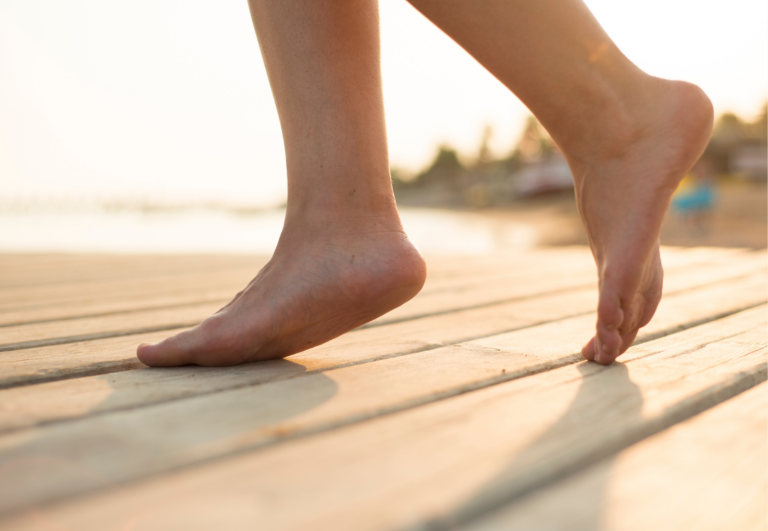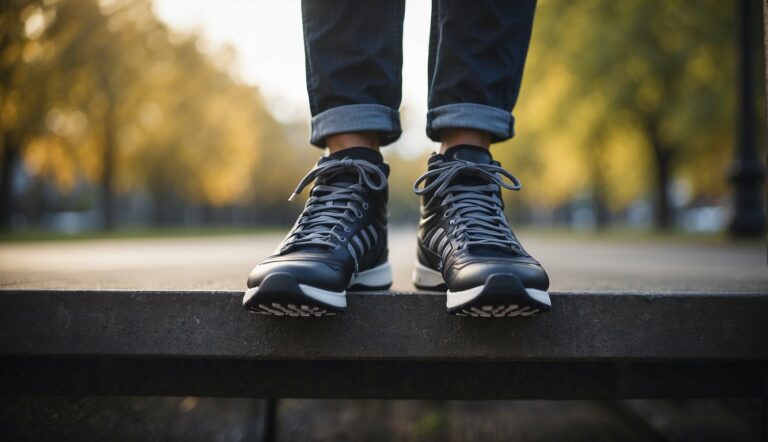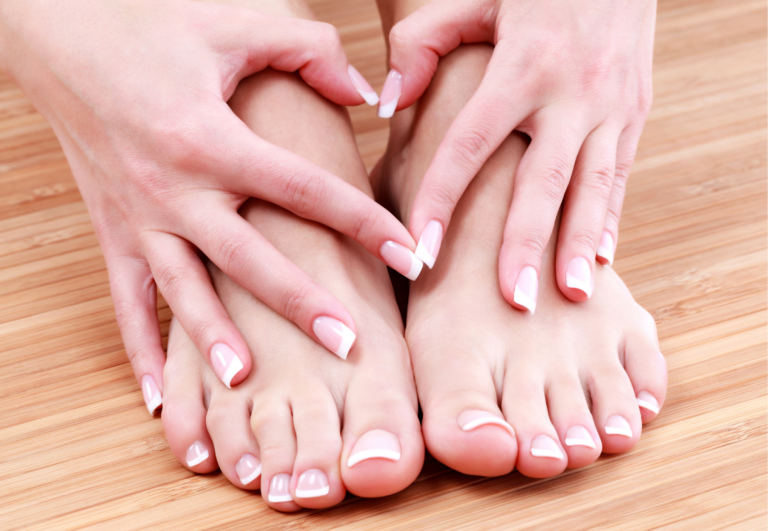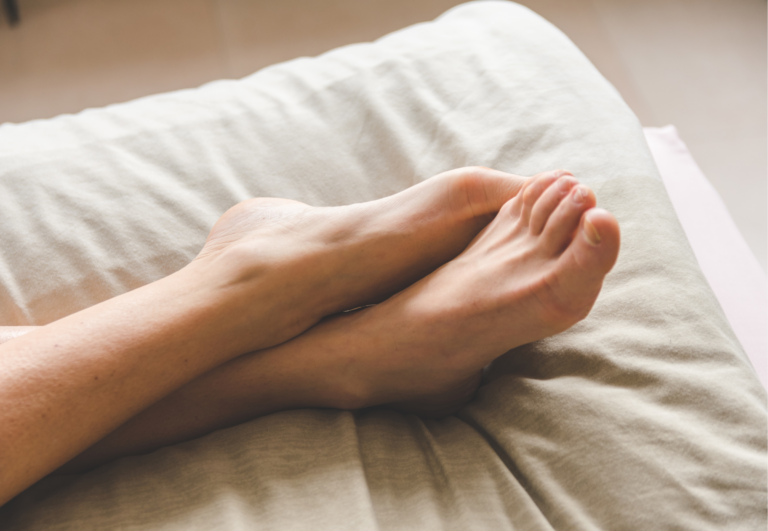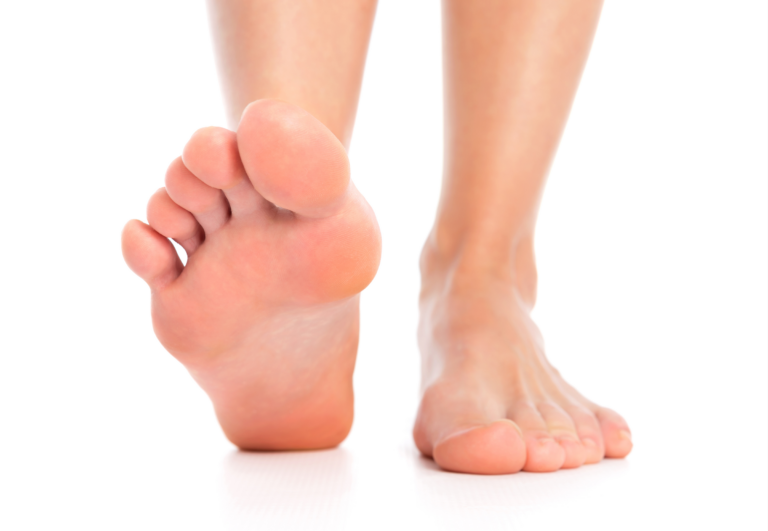Using Toe Spacers for Improving Proprioception and Foot Awareness: Enhancing Your Body’s Balance and Coordination
Toe spacers have been garnering attention among athletes and fitness enthusiasts as tools to improve proprioception, the body’s sense of its position and movement in space. As someone who has integrated toe spacers into my routine, I’ve noticed their benefits for not just foot awareness but also for overall balance and comfort. These simple devices work by separating the toes, promoting a more natural toe alignment, which is fundamental to enhancing proprioception.
Using toe spacers can be a game-changer for those looking to enhance their athletic performance or simply achieve a more stable base for everyday activities. They can assist in realigning the toes to their natural position, leading to improved sensory feedback from the feet. This can contribute to a better understanding of how our feet interact with the ground, which is critical for maintaining balance and achieving comfortable movement patterns.
How To Use Toe Spacers for Improving Proprioception and Foot Awareness
Toe spacers are devices designed to separate and align the toes to their natural position. They can be beneficial for improving proprioception and foot awareness, which are critical for balance, coordination, and overall foot health.
Here’s how they can help:
1. Enhanced Proprioception: Proprioception is the body’s ability to sense its position in space. Toe spacers stimulate the sensory receptors in the toes, leading to improved proprioception. This heightened awareness helps in better coordination and precision in movements, which is essential for runners and athletes.
2. Improved Foot Mechanics: By encouraging the toes to spread, toe spacers help restore natural foot mechanics. This can lead to improved weight distribution across the foot, enhancing balance and stability, which are important for both everyday activities and athletic performance.
3. Increased Foot Strength and Flexibility: Regular use of toe spacers can help strengthen the intrinsic muscles of the foot, which support the arches and contribute to overall foot strength. Stronger feet can improve running form and reduce the risk of injury. Additionally, toe spacers can increase the flexibility of the foot, contributing to better movement and function.
4. Prevention of Overpronation and Sprains: Toe spacers can help in preventing excessive foot and ankle pronation, which is when the foot rolls inward too much during walking or running. By aligning the toes and improving foot mechanics, toe spacers can also reduce the risk of ankle sprains and other related injuries.
5. Alleviation of Foot Pain: For those suffering from conditions such as bunions, hammertoes, or plantar fasciitis, toe spacers can provide relief by alleviating pressure and realigning the toes. This can reduce pain and discomfort, allowing for more comfortable movement and exercise.
What is Proprioception?
Proprioception is the body’s ability to sense its own position, movement, and balance. It is sometimes referred to as the “sixth sense” and involves the unconscious perception of motion and spatial orientation arising from stimuli within the body itself.
Proprioception enables us to move confidently without constantly watching our feet or hands, allowing us to walk, run, and perform other activities with coordination and agility.
Importance of Proper Toe Alignment
I understand that maintaining proper toe alignment is crucial for optimal foot function. This alignment plays a key role in balance and stability, as well as in preventing common toe deformities.
Relation to Balance and Stability
Proper toe alignment is directly associated with improved balance and stability. It affects how weight is distributed across the feet and aids in proprioception—our body’s ability to perceive its position in space. For instance, when the toes are correctly spaced, the risk of wobbling or stumbling diminishes because the foot has a better foundation.
Prevention of Common Toe Deformities
Misalignment of the toes can lead to deformities like bunions (hallux valgus), hammertoes, and overlapping toes. These conditions not only cause discomfort but also disturb the natural function of the foot. Using toe spacers can help in gradually restoring the natural spacing, thereby reducing the likelihood of these issues developing or worsening.
Benefits of Toe Spacers for Foot Health
In my experience with toe spacers, they’ve proven effective not only in promoting better foot mechanics but also in enhancing overall foot health. Let’s dive into how these simple tools help in two key areas: circulation and strength, and pain relief.
Enhancing Circulation and Foot Strength
Circulation: Toe spacers can improve blood flow to the feet, which is vital for tissue health and repair. Good circulation ensures that oxygen and nutrients reach your foot muscles, which can aid in strength and recovery.
- Increased blood flow: Promotes faster healing and recovery.
- Better nutrient delivery: Supports the wellbeing of foot tissues.
Foot Strength: By positioning the toes in their natural alignment, toe spacers encourage the proper engagement and strengthening of foot muscles.
- Engagement of foot muscles: Leads to stronger, more resilient feet.
- Improved arch support: A byproduct of strengthened foot muscles.
Alleviating Pain and Foot Problems
Toe spacers are beneficial for those suffering from discomfort due to various foot conditions. By realigning the toes, they help reduce the likelihood of bunions, hammertoes, and other deformities.
Pain Reduction: The separation and proper alignment of toes can alleviate foot pain by reducing stress on joints and soft tissue.
- Stress relief on joints: Equals less discomfort.
- Soft tissue relaxation: Leads to a decrease in foot pain.
Addressing Foot Problems: Regular use of toe spacers can prevent and treat common foot issues by allowing the foot to move more naturally.
- Prevention of bunions and hammertoes: Through proper toe alignment.
- Correction of toe deformities: Helping to restore natural foot shape.
Material and Design Considerations for Toe Spacers
When selecting toe spacers for improved proprioception and foot awareness, it’s vital to consider both the materials used and the design features that allow for comfort and effectiveness during daily usage.
Silicone Vs Gel Vs Foam Materials
I’ve found that materials like silicone, gel, and foam are commonly used in the manufacturing of toe spacers. From experience, silicone is a prime choice due to its durability and flexibility. It provides a balance between firmness and comfort, essential for those who wear toe spacers regularly. On the other hand, gel materials are soft and cushiony, great for absorbing impact during walking or running, but they may not last as long as silicone.
| Material | Durability | Comfort | Flexibility |
|---|---|---|---|
| Silicone | High | High | High |
| Gel | Medium | High | Medium |
| Foam | Low | Medium | Low |
Ergonomic Design for Daily Use
The design of toe spacers should facilitate correct toes alignment while being comfortable enough for daily wear. An ergonomic design means the spacers fit the contours of your feet seamlessly, which is important to avoid any additional pressure on the toes. I always suggest looking for designs that mimic the natural spread of the toes to ensure they can be worn comfortably for extended periods, aiding in improving foot posture without causing discomfort.
Incorporating Toe Spacers into Physical Activities

Toe spacers can be a useful tool for athletes and those engaged in physical activities who are seeking to enhance their mobility and athletic performance. When used properly, they foster better foot awareness and proprioception, which are essential in exercises, running, and yoga.
Exercises and Stretching Routines
I recommend integrating toe spacers into your warm-up and cool-down routines. For warm-up, consider exercises that focus on toe movement and flexibility:
- Toe Splay: While standing, press your toes downward into the floor to increase blood flow and stretch your toes apart.
- Toe Curls: Curl your toes repeatedly to build strength and dexterity.
During cool-downs, hold longer stretches to relax your toes and feet:
- Big Toe Stretch: Gently pull your big toe away from the others to deepen the stretch.
- Yoga Poses: Use poses like ‘Downward Dog’ to elongate the muscles of the feet with toe spacers in place.
Suitability for Athletes and Active Individuals
Athletes can reap benefits from incorporating toe spacers into their training regimen. Particularly:
- In running, toe spacers can help correct toe alignment, which may improve stride and reduce the risk of injuries.
- For sports that require agility and balance, like basketball or soccer, improved proprioception can enhance overall performance.
- Yoga practitioners find that toe spacers aid in achieving proper foot alignment, which is fundamental for many poses and balance.
By routinely practicing with toe spacers, athletes and active individuals might notice improved foot mechanics and a solid foundation for peak athletic performance.
Considerations When Choosing Footwear
When incorporating toe spacers into your routine, the type of footwear you select is crucial to maximize their benefits and improve footawareness.
The Role of Footwear in Toe Spacer Efficacy
Selecting the right footwear is essential for the effectiveness of toe spacers. Footwear that is too tight or lacks a wide toe box can undermine the benefits of toe spacers, which aim to realign the toes and enhance proprioception. Performance can suffer as a result of poor shoe choices that do not accommodate toe spacers. Proper footwear should allow for natural foot movement and toe splay.
- Footwear Characteristics to Consider:
- Wide toe box: Ensures toes have enough room to spread naturally
- Flexibility: Allows for the normal movement of the feet and toes
- Flat sole: Encourages natural foot posture without elevating the heel
Recommendations for Shoes with Toe Spacers
When using toe spacers, I recommend shoes that complement the effects. Wide toe box shoes or barefoot shoes tend to work best. These shoes should:
- Accommodate toe spacers without causing compression
- Support the foot’s natural shape and movement
My Picks for Shoes:
- Barefoot Shoes: Offer minimal interference with natural foot function
- Wide Toe Box Shoes: Provide ample space for toe spread, critical while wearing toe spacers

